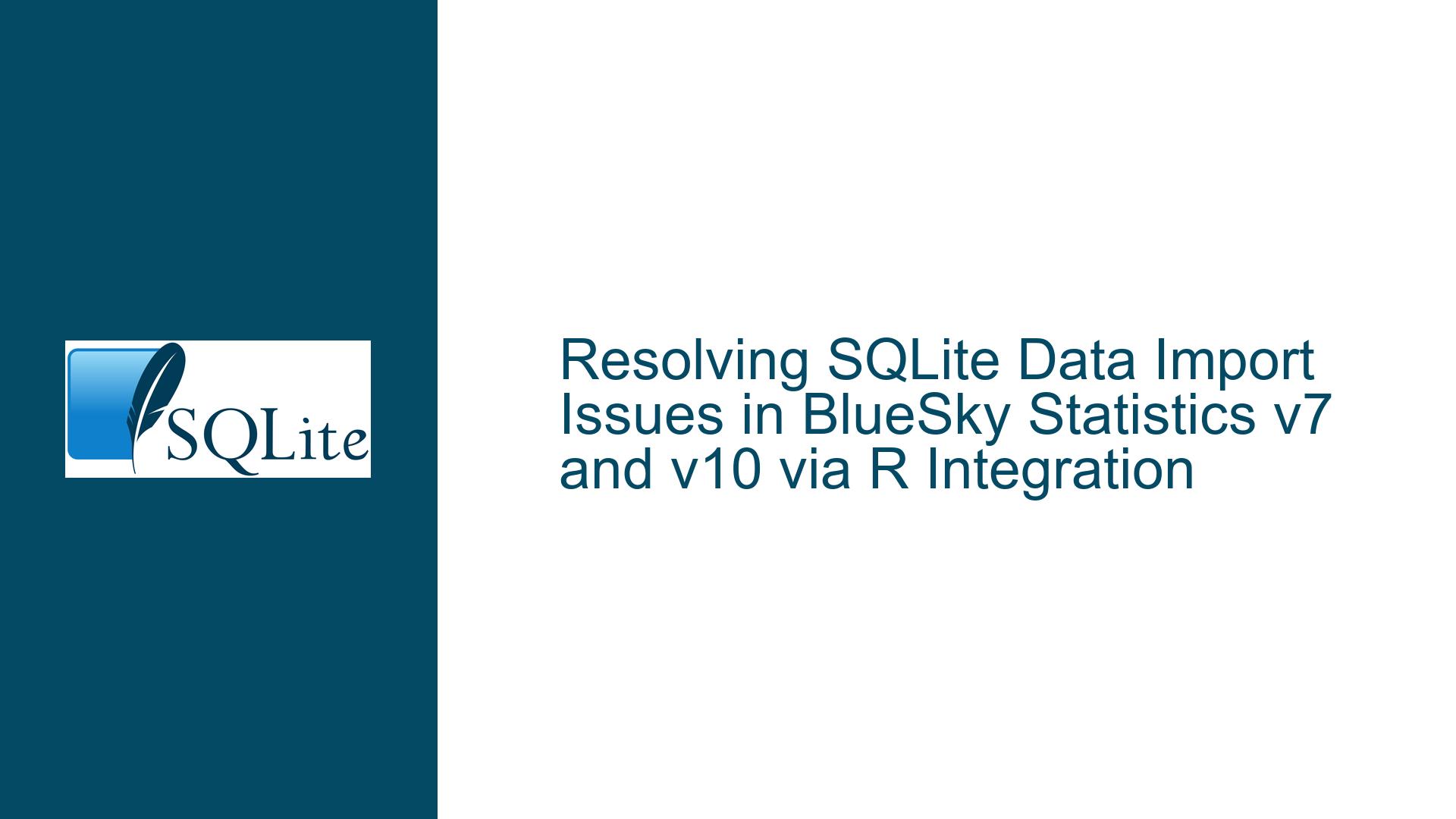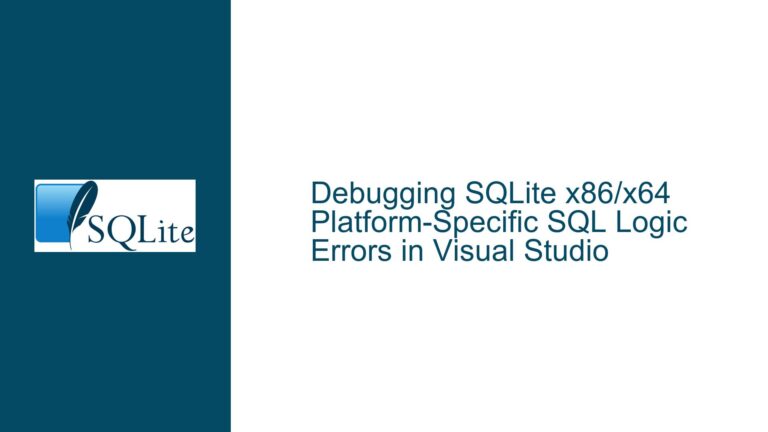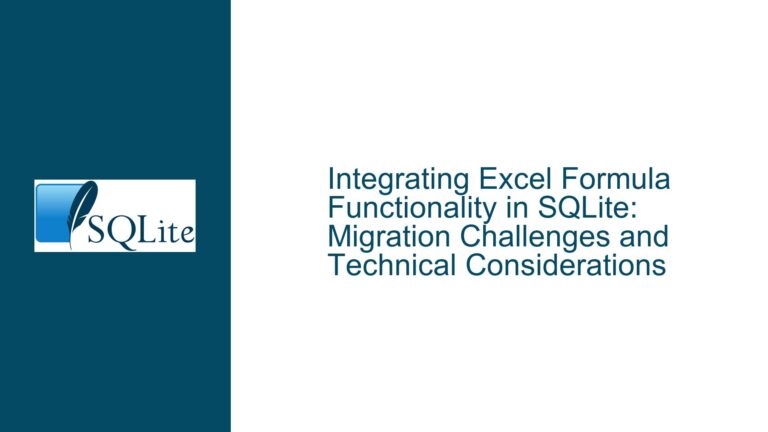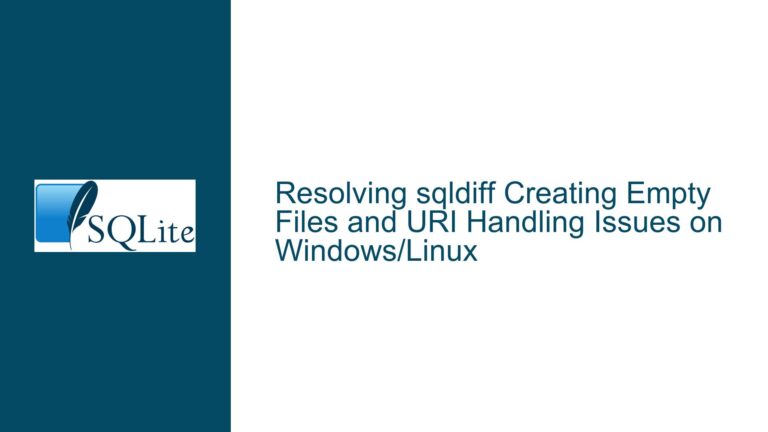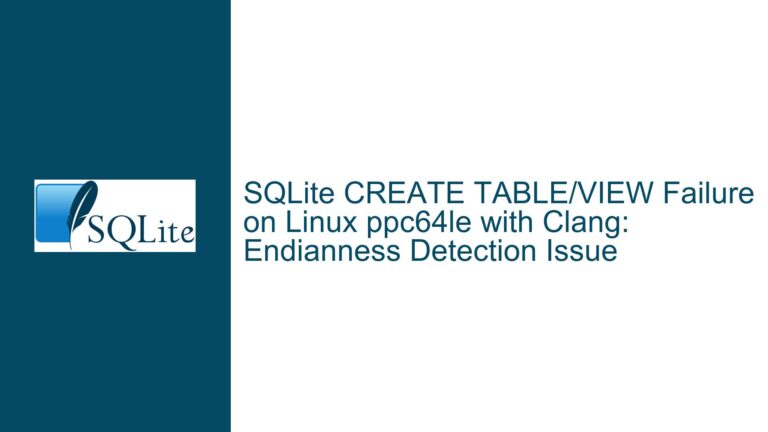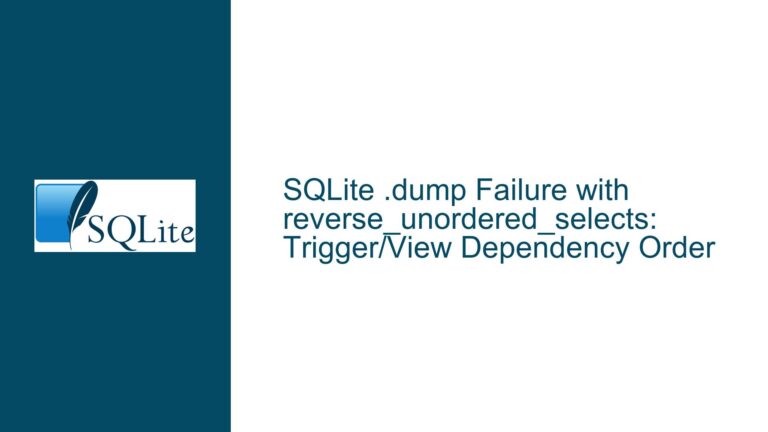Resolving SQLite Data Import Issues in BlueSky Statistics v7 and v10 via R Integration
Version-Specific SQLite Import Behavior in BlueSky Statistics Environments
Core Problem: Inconsistent SQLite Data Import Mechanisms Across BlueSky Versions
BlueSky Statistics exhibits version-dependent behavior when importing SQLite database tables or query results into its DataGrid interface. Version 7 includes a deprecated GUI-based SQL import feature that fails to handle SQLite connections reliably, while Version 10 removes this feature entirely despite retaining underlying R libraries. The critical challenge lies in reconciling three factors:
Path Syntax Discrepancies:
- BlueSky v7 requires Windows-style path separators (
\) but demands R-compatible escaping (e.g.,"C:\\User\\file.sqlite"). - BlueSky v10 enforces Unix-style paths (
/) without escape characters (e.g.,"C:/User/file.sqlite").
- BlueSky v7 requires Windows-style path separators (
Function Call Syntax Variations:
- The
BSkyLoadRefreshDataframe()function behaves differently:- v7 expects an unquoted dataframe object name:
BSkyLoadRefreshDataframe(My_DataFrame) - v10 requires a quoted string:
BSkyLoadRefreshDataframe("My_DataFrame")
- v7 expects an unquoted dataframe object name:
- The
Implicit Dependencies on R Packages:
- v7 may lack the
memoisepackage, causing silent failures during dataframe rendering. - v10 ships with
RSQLitebut might use outdated binaries incompatible with newer SQLite file formats.
- v7 may lack the
These inconsistencies force users to write version-specific R scripts bridging BlueSky’s GUI and SQLite’s embedded database engine.
Root Causes of SQLite Integration Failures in BlueSky
Cause 1: BlueSky’s Evolving R Runtime Configuration
BlueSky v7 uses an older R environment where:
- The
RSQLitepackage links to SQLite 3.11.1 (circa 2016), incompatible with databases usingWITHOUT ROWIDorSTRICTtables. - Path handling relies on R’s
base::normalizePath(), which interprets backslashes as escape characters unless doubly escaped.
In contrast, BlueSky v10 updates R but removes SQL import GUI components, leaving users dependent on manual scripting. The updated RSQLite in v10 links to SQLite 3.36.0 (2021), supporting newer syntax but requiring explicit package updates via install.packages("RSQLite").
Cause 2: DataGrid API Changes Between BlueSky Releases
The BSkyLoadRefreshDataframe() function underwent signature changes:
- v7: Accepts raw R objects via lazy evaluation, risking namespace collisions if objects are undefined.
- v10: Uses string arguments to reference global environment objects, improving stability but breaking backward compatibility.
This shift reflects BlueSky’s transition from direct R object manipulation to a managed dataframe registry.
Cause 3: Filesystem Abstraction Layer Mismatches
BlueSky v7’s internal path normalization fails to process mixed Windows/Unix separators when invoking dbConnect(). For example, dbname="C:\User\file.sqlite" throws "file not found" errors because R interprets \U and \f as Unicode escapes. v10 resolves this by enforcing / as the path separator, aligning with R’s file.path() conventions.
Cause 4: Silent Dependency on Ancillary Packages
The memoise package (used by RSQLite for caching prepared statements) isn’t bundled with BlueSky v7. Attempts to call dbGetQuery() without memoise installed result in "could not find function ‘memoise’" errors, obscured by BlueSky’s non-verbose error reporting.
Comprehensive Fixes for SQLite-to-BlueSky Data Import Workflows
Step 1: Establish a Version-Agnostic Path Handling Routine
Replace hard-coded paths with dynamic construction using file.path() and normalizePath():
# For both v7 and v10:
db_path <- normalizePath(file.path("C:", "User", "BSky_Chinook_Sqlite.sqlite"), winslash = "/")
con <- dbConnect(RSQLite::SQLite(), dbname = db_path)
This ensures:
- Automatic conversion to OS-native slashes in v7.
- Consistent Unix-style paths in v10.
Step 2: Conditional Code Execution Based on BlueSky Version
Detect the BlueSky version via BSkyGetVersion() and branch logic accordingly:
bsky_version <- BSkyGetVersion()
if (bsky_version >= 10) {
BSkyLoadRefreshDataframe("SQLite_tables")
} else {
BSkyLoadRefreshDataframe(SQLite_tables)
}
Step 3: Validate and Update RSQLite and Dependencies
In BlueSky v7:
- Navigate to Tools > Package > Install from CRAN.
- Install
memoiseandRSQLite.
In BlueSky v10:
# Update RSQLite to support latest SQLite features:
install.packages("RSQLite", dependencies = TRUE)
Step 4: Secure Database Connections with Error Trapping
Wrap connection attempts in tryCatch() to diagnose failures:
con <- tryCatch(
dbConnect(RSQLite::SQLite(), dbname = db_path),
error = function(e) {
BSkyError(paste("Connection failed:", e$message))
return(NULL)
}
)
if (is.null(con)) {
# Handle retries or alternate paths
}
Step 5: Schema Inspection with sqlite_master Exclusion
Filter out SQLite internal schemas using a parameterized query:
tables <- dbGetQuery(con, "SELECT name FROM sqlite_master WHERE type='table' AND name NOT LIKE 'sqlite_%'")
This avoids relying on dbListTables(con) followed by vector filtering, which may exclude user tables prefixed with sqlite_.
Step 6: Dataframe Sanitization Before DataGrid Loading
BlueSky’s DataGrid may mishandle factors or POSIXct dates. Convert columns to strings:
My_DataFrame <- dbGetQuery(con, "SELECT * FROM Album")
My_DataFrame[] <- lapply(My_DataFrame, as.character)
BSkyLoadRefreshDataframe(My_DataFrame) # v7
BSkyLoadRefreshDataframe("My_DataFrame") # v10
Step 7: Persistent Data Storage via RData Files
Use version-stable save() and load() for interim storage:
save(My_DataFrame, file = normalizePath(file.path("C:", "User", "BSky_Chinook_Sqlite_Album.RData"), winslash = "/"))
Load in subsequent sessions with:
load("C:/User/BSky_Chinook_Sqlite_Album.RData")
Step 8: Connection Pooling for Large Datasets
Prevent RSQLite lock contention by disabling persistent connections:
dbDisconnect(con) # Immediately after dbGetQuery()
Reconnect for each operation to avoid "database is locked" errors during bulk imports.
Step 9: Encoding Mismatch Mitigation
SQLite defaults to UTF-8, but BlueSky v7 may assume Latin-1. Explicitly set encoding:
con <- dbConnect(RSQLite::SQLite(), dbname = db_path, encoding = "UTF-8")
Step 10: Benchmarking and Alternatives for Performance-Critical Imports
For tables exceeding 1M rows:
- Export SQLite data to CSV via
.mode csvand.output data.csvinsqlite3CLI. - Import CSV into BlueSky using
BSkyLoadRefreshDataframe(read.csv("data.csv")).
This bypasses R’s memory bottlenecks during dataframe coercion.
By methodically addressing path syntax, function call disparities, and dependency management, users can achieve reliable SQLite integration across BlueSky versions. The solutions emphasize defensive coding practices to isolate version-specific quirks while maintaining a unified workflow foundation.
